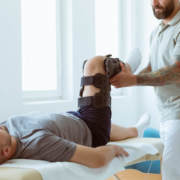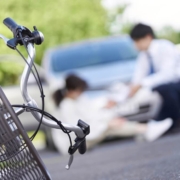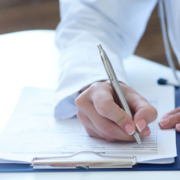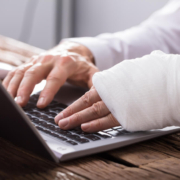Why You Shouldn’t Give an Insurance Adjuster Your Health History
Few things are more stressful than a personal injury claim. You know that the other party’s insurance company needs to understand your injuries to offer a proper settlement, so you may feel like you need to comply with every request they make. However, doing so doesn’t just give them the information they legitimately need; it also gives them information they can use to drive down the value of your claim and pay you as little as possible. One topic that may come up is offering access to your full health history. Before you do anything, it’s important to discuss it with an attorney. Call 334-262-1911 to schedule a consultation with the Montgomery personal injury lawyers at McPhillips Shinbaum.
What Does Your Health History Include?
If you’ve never had a thorough look through your medical record—which most people haven’t—you may be surprised to find out just how much personal information is in it. It’s a comprehensive log of every medical issue you’ve ever had, medications you’ve taken, medical tests you’ve had done, any surgeries you’ve undergone, and every medical visit you’ve attended.
This type of information doesn’t seem too personal in a medical context, and that’s true. Your medical care team needs to know your health history to provide effective and patient-centered care. However, that same information is incredibly personal and even invasive in the context of insurance negotiations.
Why the Insurance Adjuster Wants Your Medical History
There are several ways an insurance adjuster may use your medical history. Let’s start with the legitimate uses of your health history. First, your medical records from your current injuries provide insight into the care you’ve received, the expenses you’ve incurred, and the path forward to maximum medical improvement for you.
That gives the insurance adjuster a better idea of how much your injuries may be worth and if you’ll need ongoing medical care in the future. Additionally, they may use this information to verify your claims about your injuries. If you tell the insurance company one thing but then tell medical professionals something completely different, that’s a sign to the adjuster that you’re not being honest.
Now, onto the worrying part of this request: how they can use your health history in a less-than-ethical manner. The insurance adjuster may go over everything in your health history to look for preexisting injuries or conditions. If at all possible, they will use those preexisting conditions to downplay their client’s role in your injuries.
Pinning your current injuries on a past medical condition is a common and unfair insurance adjuster tactic. Additionally, insurance adjusters may use the information in your health history to paint you as an unreliable accident victim. If there’s a long list of medical issues in your past, the insurance adjuster may try to make it sound like you are a hypochondriac who can’t be trusted when it comes to your own health.
Protect Yourself from Weakening Your Claim
How can you safeguard your health history and ensure that the insurance company doesn’t use it against you? To start, don’t give them full and unfettered access to your medical records. Discuss your options with your Montgomery personal injury lawyer. They can determine exactly what information the insurance company actually needs and then grant them limited access to your medical records. Generally, this is limited to records for your current injury and any accident-related care you have received.
This is solid advice for any part of your personal injury claim, actually. Never give them more information than they genuinely need. Assume that any information you give them will be used against you in one way or another. Even better, don’t give them any information directly; let your attorney handle all of their requests. This ensures that you don’t unintentionally harm your claim and reduce its value.
Choose McPhillips Shinbaum for Your Injury Claim
When you’re ready to move forward with your personal injury case, the team at McPhillips Shinbaum is here to help you. Set up a free consultation with our team now by calling us at 334-262-1911 or sending us a message online. We’re ready to step in and help you fight for what’s right.







 Why Are Pedestrian Accidents Increasing in Alabama?
Why Are Pedestrian Accidents Increasing in Alabama? Important Tips for Avoiding a School Bus Accident
Important Tips for Avoiding a School Bus Accident







